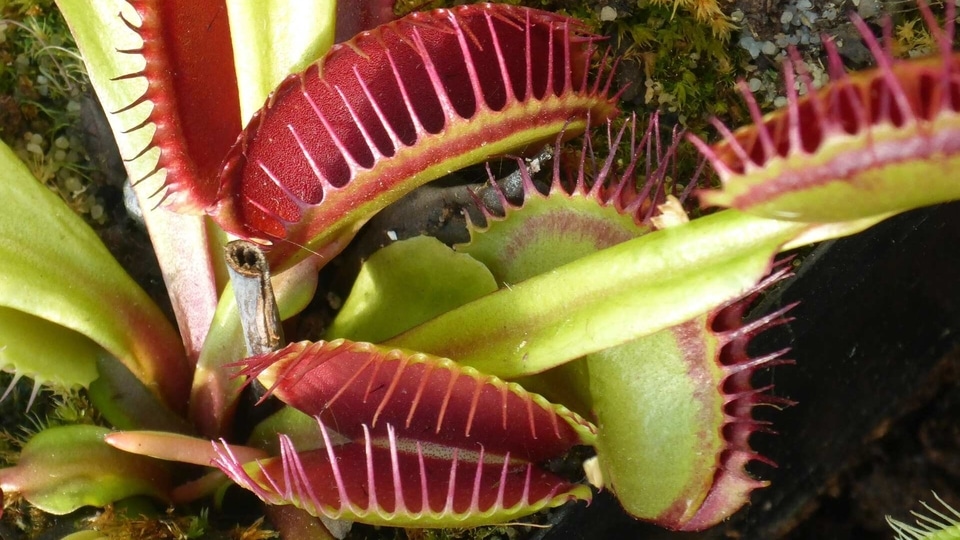Scientists develop 'robo-plants' to interact with plants
Scientists from Singapore are closely working on ‘robo-plants’, an experiment they call a fusion of nature and technology. They attached electrodes to a Venus flytrap plant.
The electrodes are film-like and soft and fit tightly to the plant's surface. They are attached using a ‘thermogel’, which is liquid at low temperatures but turns into a gel at room temperature. These electrodes are capable of monitoring weak electrical pulses naturally emitted by plants.
This technique can be useful in combating climate change hazards to crops. It is noteworthy that plants have the capability to respond to chemicals, light, gravity, humidity, temperature, oxygen levels as well as parasitic infections, sound and touch.
It is known that in 2016, a Massachusetts Institute of Technology team turned spinach leaves into sensors that can send an email alert to scientists when they detect explosive materials in groundwater.
The technology helps to control the plants using smart phone applications.
In future, this technology can be further used to enable farmers to detect diseases in plants. The plants can tell farmers that they are hit by diseases through this technology.
The technology is in its early stages, but researchers believe it could eventually be used to build advanced “plant-based robots" that can pick up a host of fragile objects which are too delicate for rigid, robotic arms.
“These kinds of nature robots can be interfaced with other artificial robots (to make) hybrid systems.
The team embedded carbon nanotubes that emit a signal when plant roots detect nitroaromatics — compounds often found in explosives. The signal is then read by an infrared camera that sends out a message to the scientists.
Venus Flytrap
It is a carnivorous plant. It is native to subtropical wetlands that are located in the East Coast of United States.
It catches prey such as insects with a trapping structure. When the prey touches a hair, the plant prepares to close.
The IUCN has put the plant under “Vulnerable” status.
Application of Robotics in Agriculture:
The future of agriculture production system aims to produce high quality and quantity agricultural produce for wide range of consumers.
The main challenge to the agricultural researchers around the world to perceive sustainable agriculture by judicious use of ever limiting natural resources and prevention of environment.
Farm mechanization is one of the determining factors for advancement of agriculture production system and to feed the burgeoning human population.
This has stressed the inventors around the world for development of modern machineries and agricultural equipment’s to perform and understand the complex agricultural processes and execute all the required operation with high precision.
Various researchers had worked to develop robotic system in agriculture. Fabricated robot that could work as 8 persons when the improved soft handling and alignment were carried out./
The system was developed for raising and grafting of seedling of y, Y and V type with success rate of 95, 93.8 and 46.8 percent respectively.
An autonomous RTK GPS guided weed-control system to remove or destroy weed.
An intelligent hoe uses vision systems to identify the rows of crops, and steer itself accurately between them, considerably reducing the need for herbicides,
EcoRobotix’s fully automatic robot was designed to destroy weeds. The system has an efficiency of more than 95% to spray at right spot with minimum damage
The robot can be modified to adapt to new or changing environment variables
Lars and Johan, 2017 developed an innovative agricultural robot for crop and weed management, intended to work in for horticultural crop management.
Health & Medicine
Robots have helped us to realise remote surgery, minimum
invasive surgery which uses robots in performing surgery. One such system widely used is Da Vinci surgical systems. Remote surgery/ telesurgeryis the ability of the doctor to perform surgery on a patient even
though they are not physically present in the same location.
It combines the elements of robotics,cutting edge
communication technology such as high speed
data connections
Here the physical
distance between surgery and patient is immaterial. It promises to allow the
expertise of specialized surgery to the patient worldwide without the need for
the patients to travel beyond their local hospitals.
Minimal invasive surgery avoids open invasive surgery in favour of
closed/local surgery with fewer traumas.
Environment
Nano-robots can be used to clear oil spill & dis- assemble pollutants especially non-biodegradable ones reducing their polluting impact.Robots can be used in nuclear plants for handling and disposal of nuclear waste materials which saves the occupational workers in the nuclear plant from potential exposure to hazardous radiations.
Disaster Management
Autonomous robotic systems designed to explore and map abandoned mines which pose a significant threat to society. Abandoned mines have dangerous explosion of methane gas which accumulates when they are no longer ventilated. One such automatic robotic system designed to automatically explore and acquire 3-D maps of abandoned mines is GROUNDHOG, developed by USA.
Space Exploration
Autonomous robots are used in space exploration as they can perform desired tasks in unstructured environment, without continuous human guidance. Remotely operated vehicles is an unmanned spacecraft can act as Lander that makes contact with an extra- terrestrial body and operates from a stationery position or as a Rover that can more over terrain once it is landed.
Robotic space crafts can acts as space probe operating in the vacuum of space and withstanding exposure to radiation and extremes of temperature in addition to some planetary destinations such as Venus or vicinity of Jupiter are too hostile for human survival.



.jpg)






If you have any doubt please let me know.